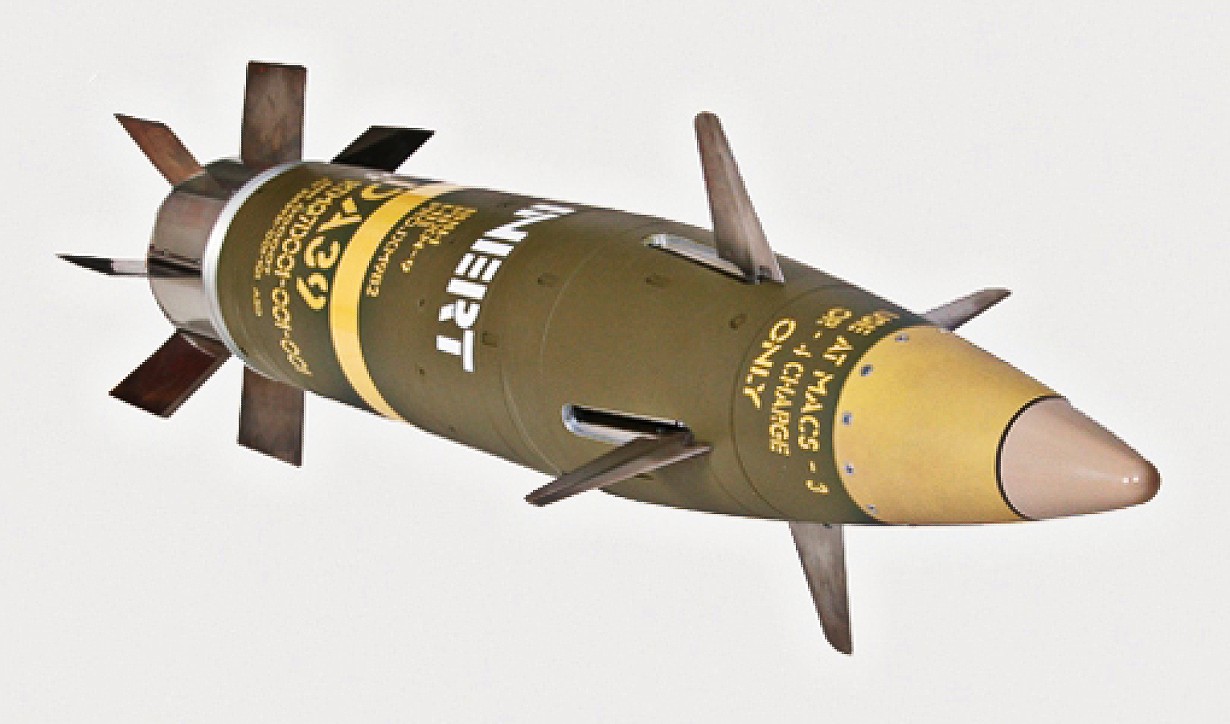Touted as “the most dangerous” weapon in the Ukrine War, the US has approved the sale of the Excalibur M982A1, arguably the most popular and widely used precision-guided 155 mm artillery round in the world, to India.
The Javelin anti-tank missile has also been green-lit for sale.
The US State Department approved two Foreign Military Sales (FMS) totalling USD92.8 million on November 20. These approvals, notified to the U.S. Congress by the Defense Security Cooperation Agency (DSCA), mark a significant boost to India’s defense modernization efforts, enhancing its capabilities in long-range precision strikes and anti-armor warfare, particularly along contested borders with China and Pakistan.
While hosting the Indian Prime Minister Narendra Modi in the US in February 2025, US President Donald Trump said, “Starting this year, we’ll be increasing military sales to India by many billions of dollars.”
The latest approval potentially builds on that pledge, and comes at a time when the two sides are trying to reach a trade deal and ease tensions after Trump imposed 50% tariffs on India earlier this year.
Moreover, it comes weeks after India and the US signed a framework agreement in October 2025 to expand defence cooperation over the next 10 years.
At the time, US Secretary of War Pete Hegseth said the agreement would enhance “coordination, information sharing and tech cooperation” and advance “regional stability and deterrence.”
The DSCA emphasized that these sales “will support the foreign policy and national security objectives of the United States by helping to strengthen the U.S.-Indian strategic relationship and to improve the security of a major defense partner which continues to be an important force for political stability, peace, and economic progress in the Indo-Pacific and South Asia regions.” India is expected to have “no difficulty absorbing these articles and services into its armed forces,” it added.

The DSCA states that the proposed Javelin deal will contain 25 Javelin Lightweight Command Launch Units (LwCLUs) or Javelin Block 1 CLUs, one Javelin FGM-148 missile, 100 FGM-148 Javelin rounds, plus additional program support and logistics components.
Meanwhile, there will be 216 M982A1 155 mm projectiles in the proposed Excalibur sale. The shells will be accompanied by additional products, including primers, propellant charges, portable electronic fire-control systems (PEFCSs) with an enhanced platform integration kit (iPIK), auxiliary goods, and other program support and logistical components. RTX Corporation is the primary contractor.
India has been using the M982 Excalibur precision-guided 155 mm artillery rounds for years, making it one of the system’s international operators alongside the US, Canada, Australia, Sweden, the Netherlands, etc.
The Indian Army integrated these shells into its arsenal to enhance long-range precision strikes, particularly for high-value targets like bunkers, command posts, and enemy artillery positions.
In fact, reports suggest that Excalibur was fired at Pakistan-based terror camps during Operation Sindoor in May 2025. “The Excalibur munitions, with a 40-kilometer range, proved very effective. The supply will replenish stocks,” an official was quoted as saying by The Times of India.
While the official did not say how many projectiles were fired, it may be safe to assume that this new order might help restore depleted inventories via an expedited FMS process.
Excalibur Artillery Shells For The Win
The M982 Excalibur shell has been jointly developed by BAE Systems and Raytheon. While BAE Systems made the body, base, and payload, Raytheon made the guidance systems.
Excalibur is a GPS-enabled artillery round with a 250–500 foot range. It provides accurate in-flight guidance and significantly increases precision to less than two meters by updating the inertial navigation system with an integrated, jam-resistant GPS receiver. The shell could be launched in any weather or terrain owing to its three fuze options: point-detonation, point-detonation delay, and height-of-burst.
It is commonly utilized for close support fire operations to reduce the risk of collateral damage to civilians or civilian infrastructure, or fratricide.
To boost its artillery strength, the Indian Army purchased about 600 rounds of Excalibur ammunition in 2019. This featured about 500 rounds of ammunition that could hit targets at 20 meters, and about 100 rounds that could hit targets at 2 meters.
Depending on the configuration and the howitzer from which it is launched, the Army’s purchased Excalibur munition has a range of 40 to 57 kilometers.
Wonder what it's like to fire a howitzer? @10MTNDIV soldiers fired an M982A1 Excalibur precision munition at low-angle using an M777 howitzer at the Slagle training area, June 27.
Video by Staff Sgt. Ashley Morris pic.twitter.com/w01GEIb8go
— U.S. Army (@USArmy) July 23, 2020
All of the Army’s 155 mm weapons, including the Bofors, M777 Howitzer, K9 Thunder (Vajra), and Dhanush artillery guns, can fire the Excalibur.
The M982A1 Excalibur projectile is an enhanced and more cost-effective variant of the M982. It uses an updated GPS receiver with improved anti-jam capability, a streamlined INS package with improved reliability, and will significantly improve the Indian Army’s precision-strike capabilities in high-altitude and contested border environments.
It uses GPS-aided inertial navigation to achieve a circular error probable (CEP) of 2-4 meters, far surpassing unguided shells, which can deviate by up to 150 meters at similar ranges.
Its design incorporates a unitary high-explosive (HE) warhead, a base-bleed unit for drag reduction, and deployable control surfaces for gliding flight, extending range beyond ballistic limits, as per reports.
The manufacturer believes that Excalibur may begin eliminating enemy assets from the first round because each shell will not fall more than two meters from the target, even if it takes multiple rounds for conventional firing to identify enemy locations in combat zones.
“The Excalibur weapon offers accurate first-round effects at all ranges in all weather conditions, in contrast to “near precision” guidance systems. Regarding the range of its renowned product, Raytheon says, “This weapon system also extends the reach of 39-calibre artillery to 40 kilometres, 52-calibre artillery to 50 kilometres, and 58-calibre artillery to 70 kilometres,” it states.
Excalibur In The Ukraine War
In the Ukraine War, the M777 howitzers firing the 155 mm Excalibur precision-guided shells proved extremely effective against Russian forces. Their small size, high accuracy, and steep trajectory made them very difficult for Russian air-defense systems to intercept.
After Ukraine began receiving these Western shells in 2022, its artillery crews gained a decisive edge in counter-battery fire.
Ukrainian forces were able to rapidly locate and destroy Russian guns and ammunition depots with just a few rounds, often from distances of 30–40 kilometers.
This drastically reduced Russia’s ability to amass ammunition near the front lines and sustain the high rates of fire that had characterized its early artillery advantage. In many sectors, the arrival of these precision 155 mm ammunition effectively neutralized Russia’s numerical superiority in tubes and shells.
In January 2023, the Donetsk People’s Republic (DPR) militia said that these guided shells made up “the most dangerous” part of US military aid to Ukraine and emphasized that they must be destroyed while still in storage facilities.
Eventually, the Russians found a way around this, and their Electronic Warfare systems started to impact their accuracy. However, if there is one thing the Ukraine War has taught the world, it is that artillery remains a central part of all ground combat.
India, for one, takes its artillery very seriously, as demonstrated by the several wars that it has fought with Pakistan. Artillery remains the “God of War” in India’s most likely conflict scenarios—especially in the mountains where everything else is terrain-limited.
- Contact the author at sakshi.tiwari13 (at) outlook.com
- Follow EurAsian Times on Google News




